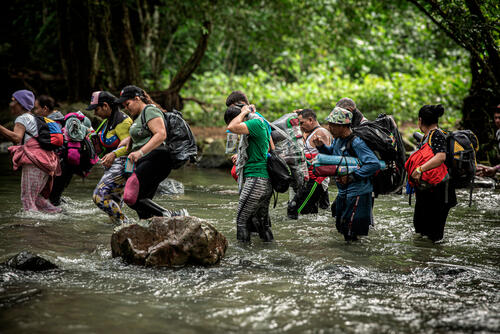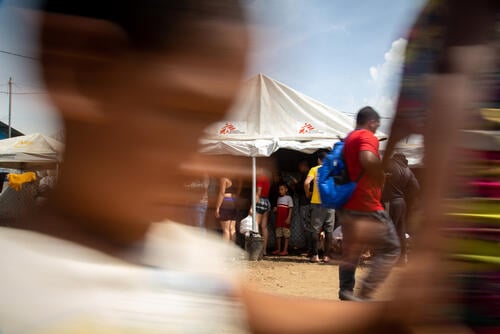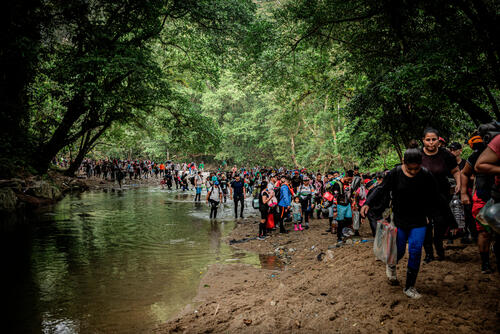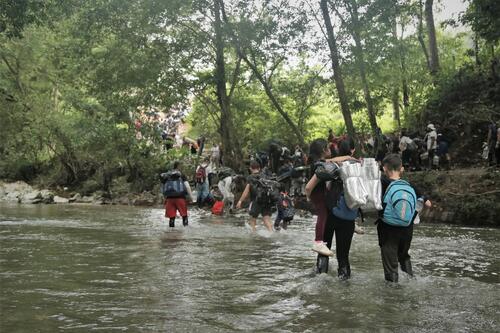Keiber Bastidas, his wife and two children were already exhausted by the time they arrived at the edge of the Darién Gap – a 100 kilometre stretch of wilderness straddling the borders of Colombia and Panama – which they would have to cross on their journey towards the United States. More than three weeks earlier, they had left their home in Ecuador’s second city of Guayaquil, fed up with the fact that a month’s hard work was barely enough to pay the rent. Five years before that, they had left Venezuela – a move that had given them the bravery to think about starting once again from scratch.
By the time the Bastidas family reached the edge of the Darién Gap, they had spent 25 days walking in the hot sun on endless roads, risking their lives by climbing onto moving double-trailer trucks, sleeping on the streets, and hanging tightly onto the few pesos they had saved up so they could buy something to eat.
They had experienced rejection, xenophobia and unexpected acts of kindness.
In Medellín, Colombia, they slept for two nights on the floor of a toll booth, before hitching a ride on a cement truck to Santafé de Antioquia. Keiber describes it as “an unforgettable town with very friendly people – a man saw us waiting and gave us 50,000 pesos (US$12) so we could eat.”
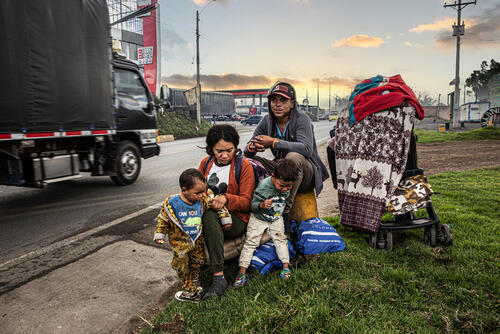
A ride on the top of a double-trailer truck took them to Turbo, a port city in northwestern Colombia. This was followed by a 90-minute boat trip across the Caribbean Sea to Acandí, near the border with Panama, before they entered the inhospitable and roadless Darién Gap.
Over the next five days, the family skirted abysses, crossed fast-flowing rivers, and saw other travellers die along the way. Most deaths in the Darién Gap are due to falls while climbing, drowning while crossing rivers, or the result of violence inflicted by criminal gangs who roam the area, kidnapping, raping and extorting money from those travelling through.
“The Darién jungle is the worst thing I have experienced in my life,” says Keiber. “I wouldn't wish it on anyone. It took us five days to cross it because we were with our children. We climbed too many cliffs. All our fingers are peeling with bloody sores. At a waterfall, after we had passed by, a man died.”
This family’s experiences are far from unique. Every year, the number of people crossing the Darién Gap breaks the previous year’s record. In 2021, it was 133,000; in 2022, it was 248,000; this year, 500,000 migrants have already made the journey, including children, pregnant women and elderly people. Despite their vulnerability and the dangers of the crossing, they receive no protection or assistance.
The Darién jungle is the worst thing I have experienced in my life. I wouldn't wish it on anyone... . We climbed too many cliffs. All our fingers are peeling with bloody sores.Keiber Bastidas, a migrant who fled with his family from Ecuador
“The number of migrants who have crossed the Darién Gap this year alone is equivalent to one in 10 of the population of Panama,” says Luis Eguiluz, MSF head of mission in Colombia and Panama. “This is a crisis to which not enough global or regional attention has been directed. Safe routes have not been guaranteed for migrants nor have sufficient resources been allocated to the organisations that help them.”
A neglected route
During 2023, Médecins Sans Frontières (MSF) mobile teams travelled along the main migrant transit routes through Colombia to provide people with medical care.
“What we have seen and heard is that people travelling through the countries of Latin America are extremely vulnerable,” says Eguiluz. “They are exposed to hunger, a lack of accommodation, a lack of water sources, excessive transit fees, misinformation, scams, xenophobia, and physical, psychological and sexual violence. All of this begins long before the migrants reach the Darién Gap, although that is where it is most in evidence.”
At the Rumichaca bridge, which connects the Ecuadorian city of Tulcan with the Colombian city of Ipiales, MSF staff came across two Venezuelan women, Friangerlin and Yucleisy. Both were walking along exhausted, wrapped in blankets, their lips and skin cracked by the cold and the high altitude.
Frangerlin, who is pregnant, was dragging a supermarket trolley from which the feet of a sleeping child dangled. Four weeks previously, the women had left Guayaquil in Ecuador with their husbands and children. Yucleisy planned to cross the Darién Gap, but Friangerlin was considering returning to Venezuela. “I'm tired of migrating,” she says.
“As we left Guayaquil, we were threatened by a group of men known as ‘Los Hinchas’ [the hooligans],’” says Yucleisy. “They told us that if we didn't pay them, they would take our babies. But our husbands spoke up and said they would have to kill us first before taking our babies or our belongings.”

Hundreds of migrants from Venezuela and Haiti enter the south of Colombia every day. They are joined by migrants from Ecuador and Peru, as well as people from countries as far away as China, India, Afghanistan, Bangladesh, Cameroon and Burkina Faso. Many have travelled by sea to Ecuador or Brazil before continuing their journey on land towards the United States. The assistance they receive as they travel through Latin America is extremely limited.
“According to testimonies from migrants with fewer economic resources, on the route through Ecuador they only find support in the two cities of Ibarra and Tulcan,” says Eguiluz. “Once they reach Ipiales, in Colombia, there are some shelters, run by local organisations with international funds, where migrants can shower, stay for one night and get three plates of food, but after that they must leave.”
The shelters in Colombia can accommodate only around two out of every 100 migrants. Three in four people sleep in the street or in public parks, and three in four cannot find enough water to drink, according to the Colombian Attorney General's Office. For more than 1,200 kilometres across Colombia, from Nariño to Antioquia, there is almost no aid available for people in transit. Once migrants leave Colombia to cross the Darién Gap, the dangers of the route multiply.
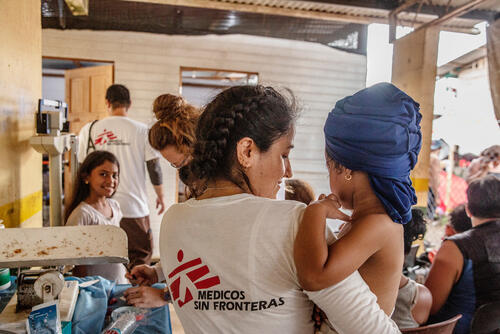
“They find people dead – pregnant women are found floating in the water dead,” says Emilady Rodríguez, a Venezuelan woman travelling with her two daughters, aged seven and ten. “A man in my group had a seizure and died and we had to abandon his body. There is a lot of robbery in that jungle too. They kidnap people, they charge US$100 per person, and if a woman doesn’t pay, they rape her.”
While some aid agencies work on the Colombian side of the Darién Gap and others work in reception centres set up by the Panamanian government, the assistance available is vastly insufficient for the number of people making the journey.
“Although there are humanitarian organisations based in Necoclí and Turbo, in Colombia, and in the migration reception centres set up by the Panamanian government on its side of the Darién, the response is not enough to cover the needs,” says Eguíluz.
MSF calls on the governments of those countries through which migrants cross to coordinate efforts to ensure safe routes and access to basic services for people on the move.
“The humanitarian crisis in the Darién Gap requires a global response,” says Eguíluz.



